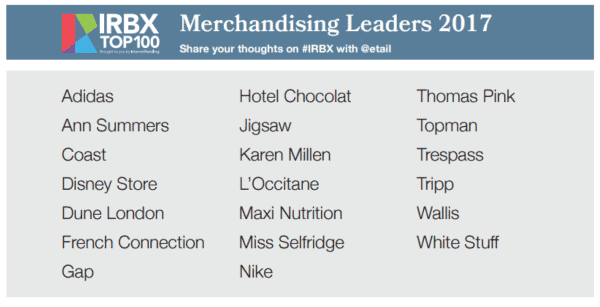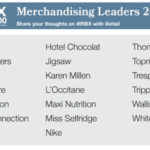Italian brands show more images, while German brands make it easier for shoppers to find the items they want to buy
BRANDS SELLING DIRECT stand out in the Merchandising Dimension when they thoroughly explain their products to website visitors. They show a range of product images and recommend alternative products. They enable shoppers to narrow down their searches using filters, in order to see whether the product is available near to them and to share feedback, through links to social media. In this pan-European research, brands stand out when they make browsing and payments easy, offering local languages, currencies and payment methods, as well as fast checkout.
Researchers focused on the Top100 brands that generated retail revenues of more than €1m a year. They counted how many product images and how many checkout pages each brand used, and analysed how easy it was to find products through site navigation, dropdown search suggestions, and alternative product recommendations. We rated the quality of product information and the number of social media links offered.
“In this Pan-European research, brands stand out when they make browsing and payments easy for customers.”
Analysis by sector
More than half (53%) of the brands considered came from the apparel and general fashion sectors. Apparel brands focus on clothing or a single type of fashion, whereas general fashion brands sell a wider variety of items, including shoes and accessories.
Brands selling direct from both sectors illustrated products well, using an average of four images, They handled payment through a checkout process of between three and four (3.5) pages.
We found general fashion brands made it easier for shoppers to find products: when search came back empty, 50% offered alternative results. These brands also returned more relevant search results, while 71% offered dropdown search suggestions.
In the apparel sector, 82% used banner advertising, compared to 74% in general fashion, while 92% of apparel brands enabled shoppers to filter products by type – higher than in the general fashion category.
More apparel brands (92%) required customers to register to checkout than general fashion traders (77%).
Overall, researchers rated Merchandising Performance higher for general fashion brands, where a clear majority offered customers product recommendations along with the ability to save a product for later
and to share it with friends.
Analysis by country
More than 60% of brands selling direct in the Index are from the UK, France, Germany and Italy. Each country contributed more than 20 brands to the listing and it was on these that researchers focused analysis by geography.
Researchers found German brands made it easier to find and read about products. Navigation was, on average, the easiest to use, with 87% of brands offering filter by product, while search suggestions were more relevant, with more than 70% making product suggestions in the drop-down search bar. Product information scored an average 3.1 out of four and 71% of German brands offered ‘save the product for later’ functionality.
Italian brands stood out for the product images that they offered, using between four and five on average. These brands also made it easier for shoppers to checkout, since fewer of them required shoppers to register.
Most (94%) French brands recommended similar products to customers, while UK-based brands had the shortest checkout process.
“The Hotel Chocolat website took a practical approach to flagging up discounts.”
What the Leading brands do
Fashion brand Jigsaw, which offered European deliveries from a UK website, stood out in this Dimension for easy navigation, with filters including product type, size, colour and prize, plus intuitive search. Its product pages showed an average of four images and suggest other products to complete the look. Customers could save a product for later and share it on a variety of social networks.
Coast, which also sells fashion, made it easy for shoppers to find products, through dropdown search suggestions and relevant search results, to see them through an average of five images and a product video, and learn about the products through customer reviews, social links and stock availability. At three pages and no registration required, checkout was relatively easy.
Footwear brand Dune London made it easy for shoppers to shop and buy, through four language-specific websites – German, Spanish, French and English – with three EEA currencies. Customers could filter footwear through six criteria, including product type, price and type of fastening –to find products displayed through an average of six images. They could also rate, share and Like products on social media, while finding checking availability close by.
Luggage brand Tripp has four country-specific websites, in three languages. It enables website users to find products quickly using five navigation filters, including features and price, autosuggest search, and alternative product recommendations. Customers can see stock levels from the site, while product information, delivery, discounts and social sharing are all shown clearly.
The visually appealing Hotel Chocolat website took a very practical approach to finding products and flagging up discounts. Users could search through product, pricing and dietary filters, and an advanced product page showed extensive information, local stock availability, reviews, ratings and social sharing – and enabled them to drop a hint to friends and family.
Liked this article? Click here to subscribe and receive all future reports straight to your inbox.






